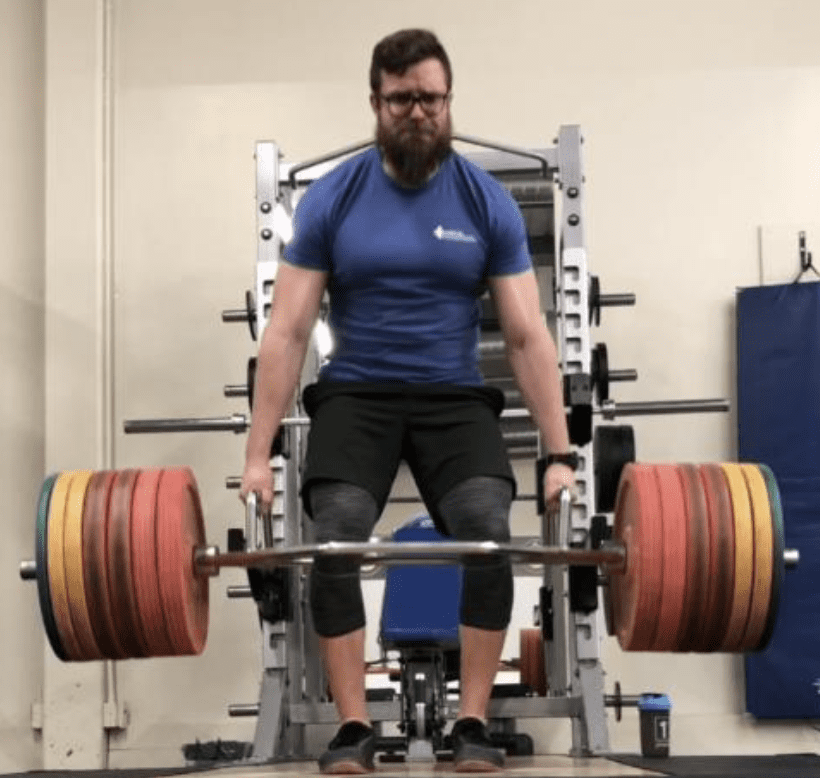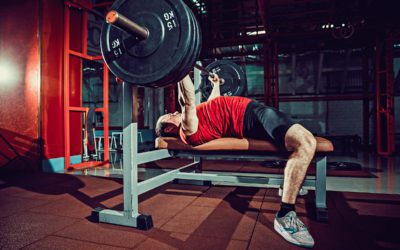How Age Affects Your Training & What To Do About It
TOPIC: Strength & Conditioning
Your body naturally changes and slows down with age – there’s no denying that. But being self-aware while making some subtle changes to your training and mindset can mitigate that process. You’ll net the best longterm gains if you aim for longevity and consistency to fight off decrepitude. Embrace your masters athlete status!

Written By
marc lavallee
Marc Lavallee has trained Canadian military units in the Search and Rescue Technician (SAR-Tech) program along with members in their active duty and selection phases. He currently coaches for a policing agency.
Programs
Embrace Your Masters Status
If you’re 35 years or older, you officially qualify as a masters athlete. It’s around this age that your body starts to change: There are natural decreases in muscle mass, bone density, and flexibility. Your ability to recover drastically slows down.
All of these factors affect training adaptations and injury risk.
Don’t resist the natural change that comes with age. I, too, am currently considering my own age now when it comes to training. You’re now a wiser, more experienced version of yourself with a deeper knowledge and understanding of your body.
It’s time to start considering the unique changes you need to make to your training that differ from your younger self. It’s time to embrace your masters status.
Check Yourself Before You Wreck Yourself
I recommend everyone get a proper assessment before starting any training program.
It’s essential to assess your current fitness level, health status, and any pre-existing conditions or injuries. A well-thought evaluation identifies areas of weakness or imbalances that need to be addressed in your training program.
It’s ideal to see a seeing a physical therapist/athletic trainer/coach to do this assessment, but if you’re limited on time and money, try out these seven at-home exercises that test your flexibility, strength, and endurance in under 20 minutes:
Tips for Training as a Masters Athlete
Keep Up Resistance Training to Build Strength
Resistance training is crucial for all masters athletes to maintain muscle mass, bone density, and strength.
The loss of muscle mass (called sarcopenia) and strength is a natural consequence of aging that often leads to a decline in overall functionality. Because of this, prioritizing strength in your training program (regardless if you’re an endurance athlete or strength athlete) is paramount to continue training at your current level.
Aim for big bang-for-your-buck exercises like squats, lunges, deadlifts, chest press, push-ups, pull-ups, rows, etc.
Keep Up Your Cardio
Cardio is essential for maintaining your cardiovascular health, improving endurance, and reducing the risk of chronic diseases such as heart disease, diabetes, and obesity.
Strength athletes – I’m looking at you here. You need to recognize and prioritize cardio as you age.
Aim to perform moderate-intensity cardio exercise for at least 150 minutes per week or vigorous-intensity cardio exercise for at least 75 minutes per week.
Prioritize Recovery
Recovery is crucial for all athletes, but masters athletes in particular need to pay attention here. Aging often impairs recovery and increases your risk of injury.
Right away you may be thinking about all the fancy tech and gadgets needed to prioritize your recovery. But, you need to nail the basics first. Adequate sleep, proper nutrition (calories, carbohydrates, protein and hydration), and active recovery methods (like foam rolling and stretching) are the biggest factors to proper recovery.
Be aware of how many rest days and deload weeks you include in your recovery. Including these in your training program also aids in your recovery.
Stay Flexible & Mobile
These two are essential for maintaining joint health and reducing the risk of injury.Incorporating stretching and mobility exercises (such as yoga, Pilates, or foam rolling) improves your flexibility and mobility.
Put extra emphasis on areas specific to you – addressing areas of limited mobility or tightness is crucial for your longevity. Common trouble areas for many athletes as they age are hips and shoulders, so be sure to check your mobility/strength in those areas!
Remember to always adjust your training program based on your individual needs. Masters athletes have varying levels of fitness, goals, health status, and past/current injuries. But with the right techniques in the bag, you can continue training and keep your body functional well into your 90s!
Find Your Perfect Training Plan
Sometimes all you need to reach your destination on your fitness journey is an expert guide. Look no further, we've got you covered. Browse from thousands of programs for any goal and every type of athlete.
Try any programming subscription FREE for 7 days!
Related Articles
You May Also Like...
The Ultimate Guide to Lunges: Queen of all Glute Exercises
Your glutes are the largest muscle group in your body. They’re responsible for almost everything your legs do—walking, running, jumping, squatting, lunging, and just standing upright. As far as moving through space goes, strong glutes are the bedrock of overall...
A Beginner’s Guide to Steel Mace Training
Think you’ve mastered kettlebells? Meet the steel mace — the brutal, offset weapon that forces your body into three-dimensional stability, grip work, and rotational strength. Ancient tool. Modern performance.Written Byjesse grund Jesse Grund’s passion is simple: coach...
The Best Bench Press Warm Up Strategy
We get it. You’re pressed for time in the gym. But skipping the warm up is the surest way to underperform and risk injury. This 3D approach to your bench press warm up not only allows you to lift more weight, but also ensures the long-term health of your shoulder...
The Ultimate Guide to Lunges: Queen of all Glute Exercises
Your glutes are the largest muscle group in your body. They’re responsible for almost everything your legs do—walking, running, jumping, squatting, lunging, and just standing upright. As far as moving through space goes, strong glutes are the bedrock of overall...
A Beginner’s Guide to Steel Mace Training
Author: Jesse Grund
Mace training will make you a better mover without it’s not confining you to a fixed space or predetermined range of motion. Second, it’s an offset load with 80 to 90 percent of the weight in the head. You’re also constantly having to resist rotation, which creates greater core engagement.

Want more training content?
Subscribe
For Coaches
For Athletes
About
Support
Training Lab
Access the latest articles, reviews, and case studies from the top strength and conditioning minds in the TH Training Lab!
Made with love, sweat, protein isolate and hard work in Denver, CO
© 2024 TrainHeroic, Inc. All rights reserved.





